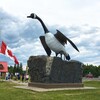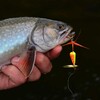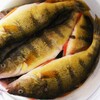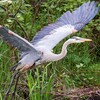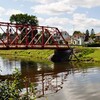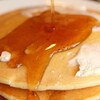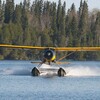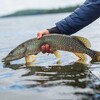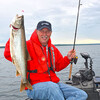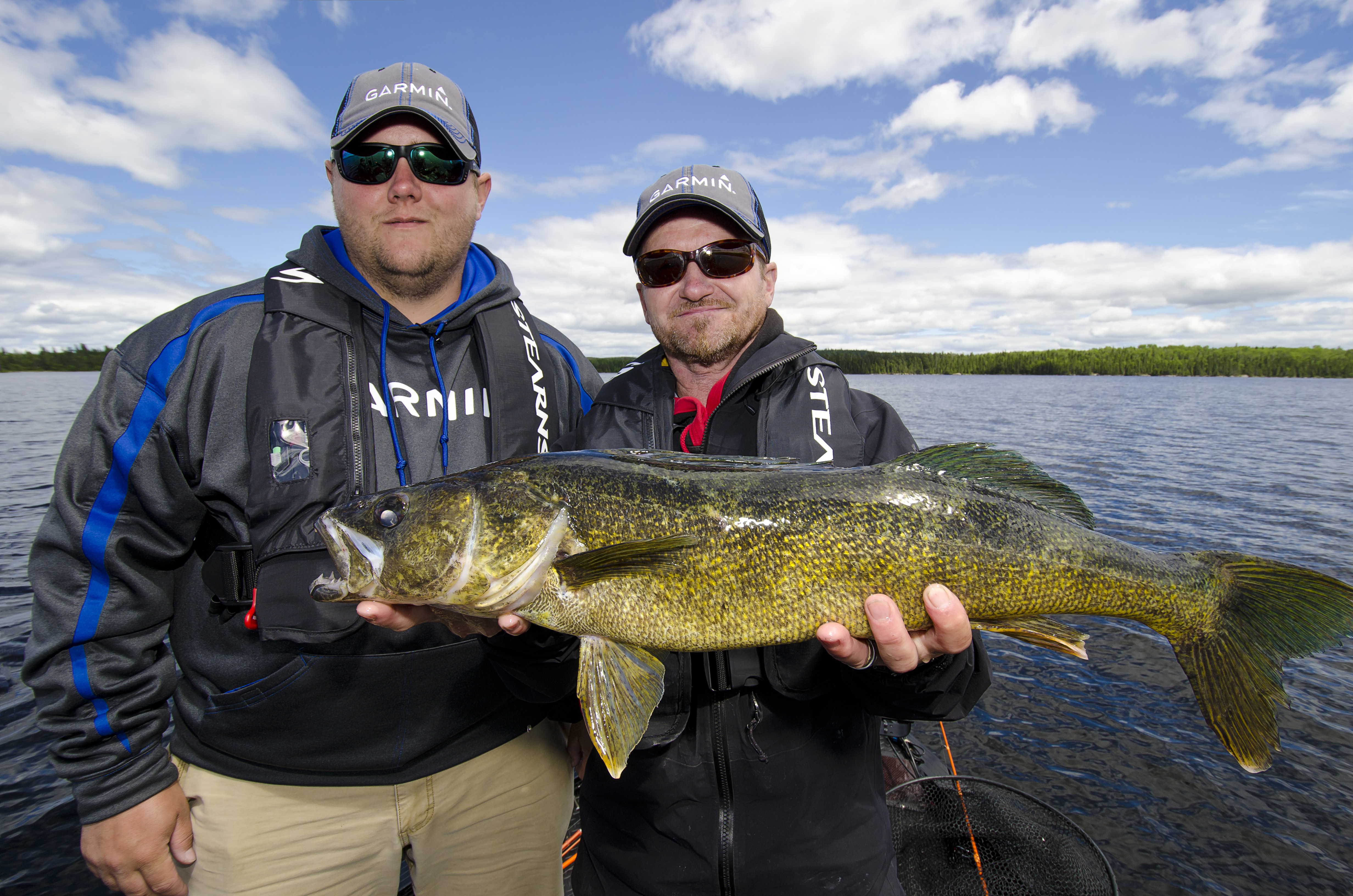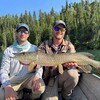
Spinners are Winners

Some lures are more effective at catching certain species than others. When it comes to catching walleye, jigs are king. For catching smallmouth bass a crankbait that imitates crayfish is hard to beat. For pike, the casting spoon reigns supreme, and for targeting the brook trout Ontario's Algoma Country is famous for, the "go-to" lure is an in-line spinner.
Locally known as "specks" or "speckled trout," the brook trout is exceptionally attractive, but this fish is actually not a trout at all. Brook trout are members of the char family, like their close cousin, the lake trout. Occasionally, a naturally occurring hybrid is produced, known as the splake. Splake displays the primary colours of a brook trout and the body shape and size of a lake trout.
Understanding In-Line Spinners
Trout fishing and spinners are so deeply ingrained in one another that more than a few noteworthy lure manufacturers have built thriving businesses centred around producing these lures. Case in point, the Yakima Rooster Tail and Mepps Agila rival the world-famous Rapala Minnow in terms of product sold, fish caught and anglers who swear by the effectiveness of these products.
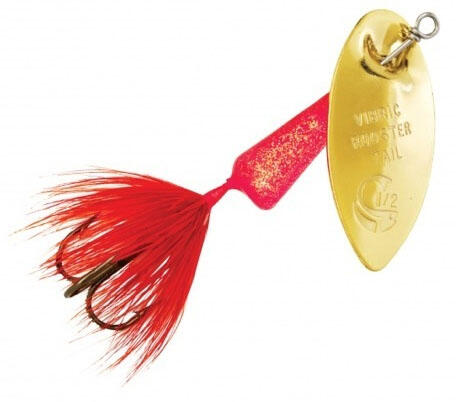
The Rooster Tail and the Mepps Agila have become household words among trout fishermen who know that these baits are legendary for their ability to catch fish in rivers, natural lakes, impoundments and even in the Great Lakes! The success of these lures focuses on the fact that blades rotating and flashing have powerful fish-attracting powers. The flash of the blade, the colourful weights and beads, plus that pulsating hackle combine to create a fishing lure that seemingly was made with specks in mind.
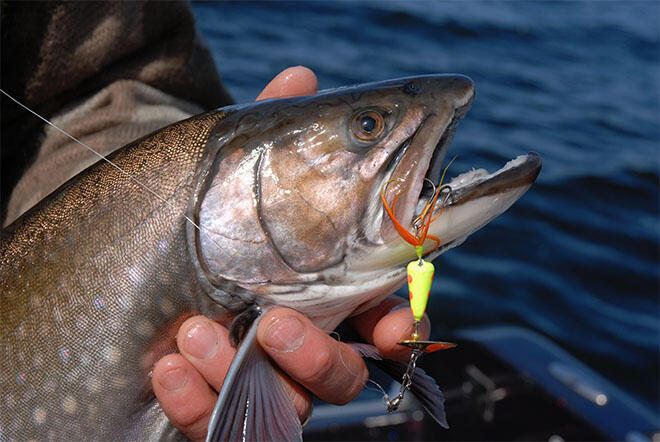
All in-line spinners function in a similar way in that a blade rotates around a wire shaft, creating flash and vibration. Some spinners like the Panther Martin and the Yakima Vibric feature a blade with a hole in it that allows the blade to spin on the wire shaft. Other spinners incorporate a blade and clevis combination that attaches the blade to the wire shaft.
Regardless of how the blade spins, flash and vibration created by the blade are the big draws to this style of trout lure. Different spinners also feature different blade types, including French, Colorado, Indiana and willow leaf.
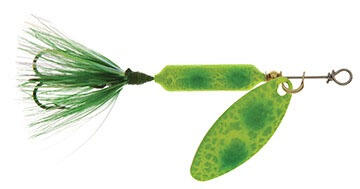
The best blade design for trout fishing depends a little on the water being fished. When fishing lakes or beaver ponds, the best spinners are going to be models that have good blade rotation at the slowest possible retrieve speeds. Spinners featuring French, Colorado and Indiana-style blades top that list.
When fishing rivers and streams, spinners with willow-style blades are preferred. Because the willow blade rotates at an angle tight to the wire shaft, this style of spinner has less lift in the water and can be used to target deeper pools in fast-moving water.
The colour and/or plating finish of the blade, plus adornments like the hackle used to dress up the treble hook, are all part of the spinner's allure. It's well known that trout are colour-selective, and spinners come in the widest assortment of colour options.
Spinner Sizes
For most brook trout fishing applications, a spinner in the 1/8- to 1/4-ounce range is ideal. Spinners this size are perfect for casting into creeks, streams and rivers.
For targeting brook trout living in natural lakes and beaver ponds, a little bigger lure in the 1/4- to 3/8-ounce range is recommended.
Swivels Help Manage Line Twist
Perhaps the biggest shortcoming of an inline spinner is the line twist it tends to cause. Because the blade and shaft are turning, line twist can quickly become a major issue unless the angler uses a quality ball-bearing swivel to prevent twist. A size No. 2 ball-bearing swivel is about perfect for most brook trout fishing applications.
The Yakima Vibric features a body design that's offset, which acts as a keel as the bait passes through the water. This simple design eliminates line twist and allows anglers to use this spinner by tying the fishing line directly to the spinner.
A Word On Fishing Line
Trout are wary creatures, and the best success is going to be achieved when using light and ultra-low visibility lines. Monofilament line in the 4- to 6-pound test range is considered the trout fishing standard. Personally, I favour using fluorocarbon line for trout fishing because fluorocarbon line is nearly invisible in the water and it has a little more abrasion resistance than monofilament lines.
It is important to note that not all fluorocarbon lines are suitable for casting applications. Some fluorocarbon line is formulated as leader material. This line has more abrasion resistance and tends to be much too stiff to effectively spool onto a spinning reel. Other fluorocarbon lines are formulated to make them a little more limp and user-friendly on a spinning reel.
If fluorocarbon intended as leader material is spooled onto a spinning reel, it will pop back off the spool almost as fast as it can be wound on! The best sizes of fluorocarbon line for casting trout spinners are 4-, 6- and 8-pound tests, with the smaller sizes being ideal for small streams and the larger sizes for larger streams and lake fishing.
Why Algoma Country
A big part of the reason that Ontario's Algoma Country is considered one of the best places in North America to fish for brook trout is the habitat. This region of Ontario features countless streams and lakes that feature water cold enough to support brook trout. Like their cousin, the lake trout, both of these members of the char family require exceptionally cold and pure water.
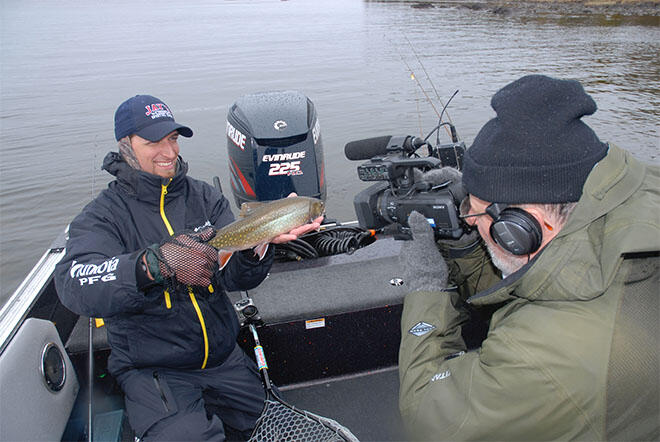
Summing It Up
Because brook trout only live in waters that are cold, clear and pollution-free, this species has become the "poster fish" for those who consider "specks" as a symbol of environmental quality. Not surprisingly, the best brook trout fisheries are found in places that are remote. It's true that brook trout range throughout all of Ontario and much of Canada, but Algoma Country rests smack in the middle of the "best of the best" when it comes to brook trout fishing destinations.
Recommended Articles

The Group of Seven in Algoma

9 Facts to Know about the Agawa Canyon Tour Train
